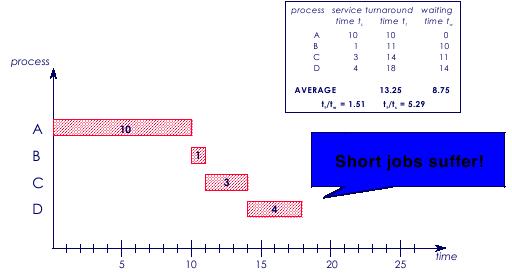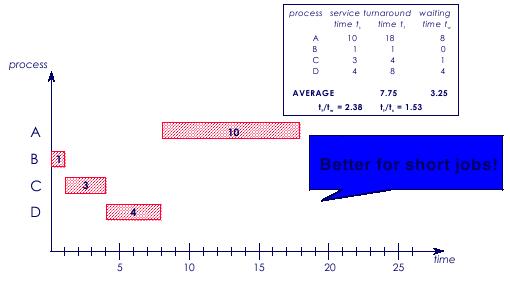

Quiz 4, Q&A
Q What is semaphore? Describe the down operation.
A. Semaphores are variables that are used to signal the status of shared resources to processes.
the down operation on a semaphore
checks to see if the value is greater than 0
if so, it decrements the value and continues
if the value is 0, the process is put to sleep without the completing the down for the moment
all is done as a single, indivisible atomic action
it is guaranteed that once a semaphore operation has started, no other process can access the semaphore until the operation has completed
Q. What is the Monitor? Adv. & Disadv.
A. Monitors are a high level language construct for dealing with synchronization.
Adv.
Monitors are easier to program than semaphores
programmer only has to say what to protect, compiler actually does the protection (compiler will use semaphores to do protection)
Natively supported by a number of programming languages: Java
Disadv.
Main problem: provides less control
Q Explain the metrics in the scheduling.
Metrics;
Execution time: T_s
Waiting time: time a thread waits for execution: T_w
Turnaround time: time a thread spends in the system (waiting plus execution time): T_s+T_w=T_r
Normalized turnaround time: T_r/T_s
Q Describe FCFS& SJF scheduling algorithms, give example.
FCFS is the simplest scheduling policy
Arriving jobs are inserted into the tail of the ready queue and the process to be executed next is removed from the head (front) of the queue
FCFS performs better for long jobs
SJF policy selects the job with the shortest (expected) processing time first
Shorter jobs are always executed before long jobs
One major difficulty with SJF is the need to know or estimate the processing time of each job
Also, long running jobs may starve for the CPU when there is a steady supply of short jobs

